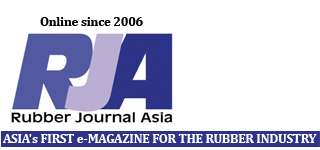![]() At K2016 show in Germany recently, German materials maker Wacker Chemie introduced its Imagine Series K printer for 3D printing of silicone rubber parts, since the company says up till now “there is no mature 3D printing technology available for silicones” http://www.injectionmouldingasia.com/nov2016/news3.html. Now, US silicone materials maker Dow Corning has launched its LC-3335 3D printable silicone rubber, developed in collaboration with German manufacturer for fused filament fabrication (FFF) 3D Printers RepRap.
At K2016 show in Germany recently, German materials maker Wacker Chemie introduced its Imagine Series K printer for 3D printing of silicone rubber parts, since the company says up till now “there is no mature 3D printing technology available for silicones” http://www.injectionmouldingasia.com/nov2016/news3.html. Now, US silicone materials maker Dow Corning has launched its LC-3335 3D printable silicone rubber, developed in collaboration with German manufacturer for fused filament fabrication (FFF) 3D Printers RepRap.
Dow Corning says the breakthrough new materials technology may be the first silicone solution to be formulated specifically for additive manufacturing processes.
“LC-3335 3D Printable Silicone Rubber is representative of what close collaboration between a leading materials supplier and a top 3D printing equipment company can achieve,” said Hugo da Silva, global industry director for lighting and 3D printing at Dow Corning. “More than simply a technological achievement, this patent-pending breakthrough material introduces the power and versatility of silicone technology into the realm of 3D printing. Dow Corning customers can now combine the uniquely beneficial properties of our silicones with faster prototype development and small series production of highly complex parts.”
German RepRap designed its patent-pending 3D printer to print successive layers of LC?3335 3D in a method comparable to the FFF process, forming complex silicone parts that would be difficult to achieve through conventional injection moulding, it says. Each layer of silicone is fully cross-linked through thermal cure to enable parts with mechanical properties that are comparable to moulded components.
Test parts printed with LC-3335 Silicone on German RepRap’s platform exhibited the same sharp cure profile of injection moulded test samples, as well as 80% (on average) of the samples’ mechanical properties, says Dow Corning. Specifically, 3D printed parts demonstrated 70% of the tensile strength elongation of injection moulded samples, and 90% of their tear strength.
Consequently, with German RepRap’s platform, LC-3335 3D is potentially capable of printing functional prototypes and enabling small manufacturing trials of complex parts. Further, the material’s properties closely match those of liquid silicone rubber (LSR), allowing an easy transfer into injection moulding processes for high-volume manufacturing.
Dow Corning also says it is committed to “collaborating with leading equipment makers to extend the benefits of industry-leading silicone materials and expertise to the fast-growing field of 3D printing”.
Additive manufacturing promises to accelerate the design-to-production process by quickly converting digital designs into functional parts for low to medium-volume manufacturing without the time or cost required to first build a molding tool and prototype. Consequently, the technology can significantly reduce production waste, optimise the supply chain, eliminate tooling and speed the time to market for new designs unachievable through conventional technology.
LC-3555 Printable Silicone Rubber expands design options in automotive, healthcare, cookware, lighting and other applications where traditional LSRs are used.
Dow Corning is currently exploring future silicone rubber products for 3D printing, including optical and medical-quality grades, UV-curable materials and other solutions.
